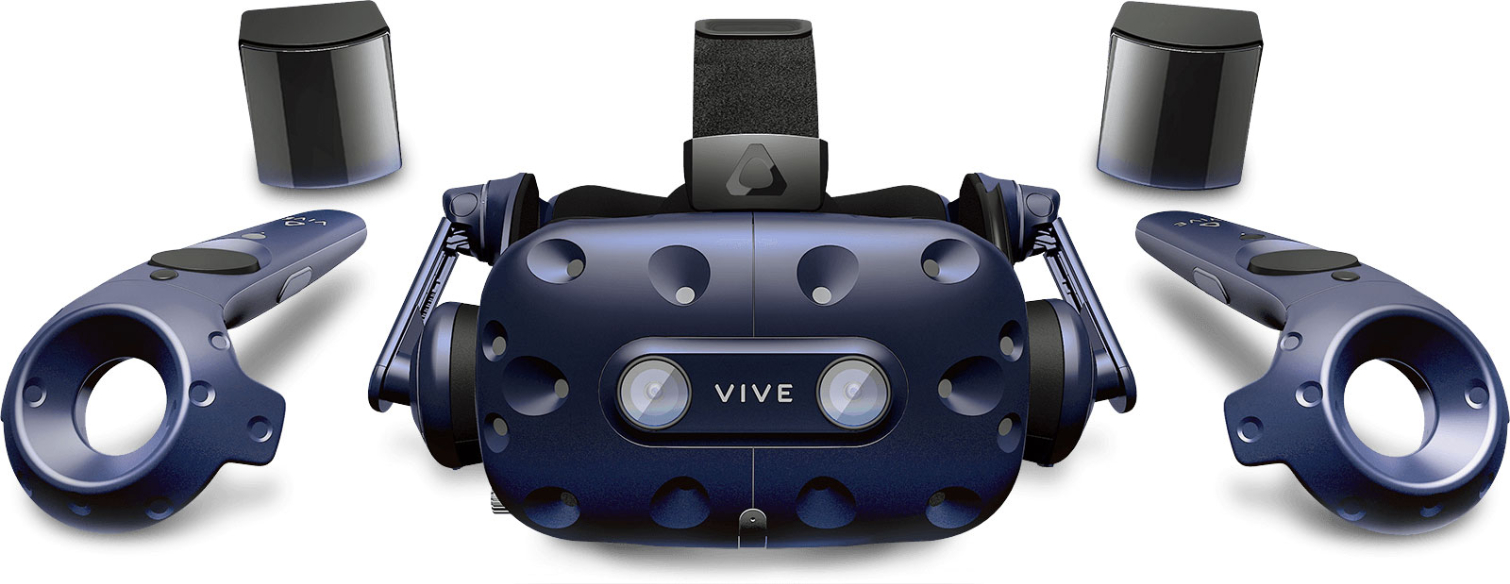HTC Is Testing Multi-Room Vive Tracking Configurations
Valve is making progress with multi-room VR configurations using SteamVR Tracking 2.0. The latest SteamVR beta update can address up to 16 base stations, which is a big step towards multi-room tracking spaces and affordable warehouse-scale setups.
Last year, Valve started talking about the second generation SteamVR Tracking technology, which would include upgraded sensors and new base stations that would be more economical to produce and offer improved tracking capabilities. One of the key features SteamVR Tracking 2.0 is the capability of addressing more than two base stations at once, which would improve tracking fidelity by eliminating occlusion issues. Valve also spoke of the new tracking technology opening the doors to multi-room spatial tracking.
HTC’s Vive Pro headset features SteamVR Tracking 2.0 sensors, and officially it supports up to four SteamVR Tracking 2.0 base stations, but you’ll soon be able to connect a whole lot more than four base stations. Alvin Graylin, China President at HTC, revealed that HTC discovered that the most recent SteamVR beta can recognize up to 16 base stations. Graylin also released a short video that demonstrates a multi-room tracking area, which is separated by walls and connected via a hallway.
Great News for Commercial Operators
The idea of a multi-room VR setup may sound enticing, but it’s not very practical for home users. Sure, you could install base stations in your hallway and multiple rooms in your home, but what of the cables? Wireless systems like the TPCast wireless adapter or the upcoming HTC-branded DisplayLink wireless system require a line of sight to function, so those are out. Right now, the only viable option for multi-room VR is a backpack PC, and how many people have one of those at home?
Location-based VR entertainment is where multi-room VR setups would flourish. Currently, commercial operators must turn to expensive mo-cap solutions, such as OpticTrack, to build experiences that aren’t confined to a solitary open area. SteamVR Tracking 2.0 could save those operators a lot of money. In the words of Graylin: “large space VR setup costs are about to drop exponentially!”
Not Ready Yet
The latest SteamVR beta can address up to 16 base stations, but the software is not ready for prime time yet. Graylin said that HTC hadn’t encountered any problems with the multi-room configuration. However, Alan Yates, an engineer at Valve and the creator of Valve’s SteamVR Tracking technology, said that the announcement is premature. Yates noted that the first four sensors that the headset sees would provide tracking and the rest would be ignored.
Yates said the current beta “is mainly about beta support for the radio-based channel configuration tool” for the base stations. It could be a while before we see true support for a dozen or more base stations, but we can take this as a sign that Valve is actively developing the feature.
Get Tom's Hardware's best news and in-depth reviews, straight to your inbox.
Kevin Carbotte is a contributing writer for Tom's Hardware who primarily covers VR and AR hardware. He has been writing for us for more than four years.
